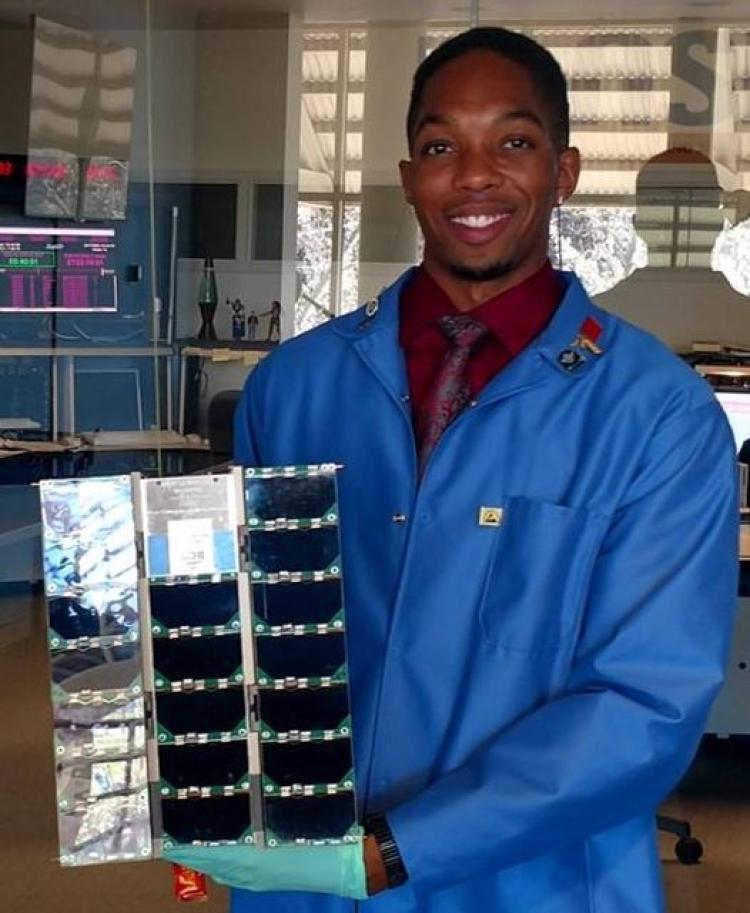Fiske Planetarium, emeritus prof awarded $2 million NASA grant
This grant will be used to produce full dome videos that will educate the public on NASA’s latest scientific endeavors including two upcoming solar eclipses
University of Colorado Boulder’s Fiske Planetarium and an emeritus professor have won a $2 million grant from NASA to produce videos and distribute them to planetariums around the globe.
Douglas Duncan, emeritus professor in the Department of Astrophysical and Planetary Sciences and principal investigator for the project, titled “Science Through Shadows: Eclipses and Solar Science, Occultations and Solar System Origins,” will work with John Keller, director of the Fiske Planetarium, to produce videos on the sun, asteroids and NASA missions over the next three and a half years. The videos will be created in both “full-dome” format used by planetariums, and flat screen, used at libraries, schools and on YouTube.
“This award allows Fiske to continue to produce high-quality content on NASA exploration that will be shared with millions of audience members in planetariums across the planet,” Keller says.

At the top of the page: Fiske videos are now being seen worldwide (Photo by Casey Cass). Above: Chris Moore (PhDAstro’17), an astrophysicist at Harvard University, holds his shoebox-sized satellite designed to study the sun. The satellite was featured in one of Fiske Planetarium’s prior educational videos.
Duncan says a major emphasis of the grant and videos are two upcoming solar eclipses, one in October 2023 and another in April 2024, both of which will cross the United States.
“We’ll be producing videos that show people how to safely watch eclipses, why they should see a total eclipse, and what scientists are learning about the sun from eclipses and spacecraft,” Duncan says.
Keller says that in addition to eclipses, the videos will also feature occultations, where an object in our solar system passes in front of a distant star, creating a shadow.
“Occultations are another important technique scientists use,” Keller says. “The science-through-shadows project will share with audiences the adventure of international occultation campaigns that researchers use to plan encounters by spacecraft with asteroids and minor planets.”
Keller adds that researchers use eclipses and occultation to better understand our sun and solar system. “The accuracy and precision with which we can measure planetary positions and characteristics through stellar occultations surpasses even the Hubble or Webb space telescopes,” Keller says.
Another key element of the grant, Duncan says, is reaching audiences that have been “less served or exposed” to resources in science. So Fiske is partnering with museums in Detroit, Michigan, and Oakland, California, and involving high school students from those areas to help with the design and production of some of the videos.
Fiske has been producing videos since 2015, when it remodeled and added digital video production capabilities, including a new staff member to produce videos.
“Our idea was that any faculty member at CU could use Fiske and work with us to support their classes with stunning, 360-degree—full dome—video,” says Duncan, who directed the Fiske Planetarium from 2002 to 2018. “Not just astronomy, it could be geology, art, you name it. But then we went beyond campus, and in 2015 we won our first NASA grant to produce and distribute videos to other planetariums.”
Since then, Fiske has created videos on many topics including how satellites measure ground water, how scientists discover new worlds, the New Horizons spacecraft flying past Pluto, the Parker Solar Probe flying to the sun, moon rocks, miniature satellites and climate change. The videos have been seen in more than 260 planetariums worldwide.
“Our videos show the wide variety of things NASA does—not just Mars and Hubble—that benefit us here on earth, and they also are designed to interest students in space-related careers,” Duncan says. “Space is one of the most important industries in Colorado, and CU is one of the leading universities for space missions and funding by NASA.”
Duncan says the first video produced at Fiske shows how NASA satellites can tell how much water is underground by sensing the slight difference in mass and therefore gravity that’s seen in wet ground compared to dry.
Our videos show the wide variety of things NASA does—not just Mars and Hubble—that benefit us here on earth, and they also are designed to interest students in space-related careers.”
“As California is struggling with drought conditions, NASA can tell them how bad the drought is underground, not just in the visible reservoirs,” Duncan says. “Of course, water is important to people all over. So we tell stories about how NASA data can help us on earth.”
Another video shows how satellites are getting miniaturized and features CU Boulder alumnus, Chris Moore, who now works as an astrophysicist at Harvard University, and his shoebox-sized satellite designed to study the sun.
Duncan says the videos have received “very positive” feedback.
“Medium and small planetariums—which is most of them—don’t have the budget or staff to produce their own videos,” he says.
Keller adds, “Building off the subject matter expertise found throughout CU Boulder and the Front Range, Fiske is well known for producing high-quality, accessible content for the planetarium community.”
“CU is known as a leader in teaching and communicating science,” Duncan says. “For instance, our free science-teaching applets at PhET have been used over 1 billion times. This grant allows us to use our expertise to engage audiences all over the world.”

